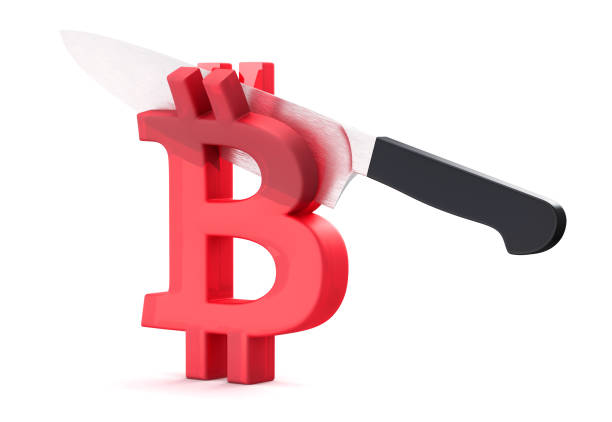Bitcoin (BTC), the largest cryptocurrency by market capitalization, draws its uniqueness from several elements including its decentralized nature, peer-to-peer concept limited supply and the periodic bitcoin halving event amongst others.
Bitcoin halving has become one of the most notable events in the crypto industry given its potential to significantly impact the price of BTC and the broader cryptocurrency market. Notably, three halving events have occurred at the time of writing, with the fourth expected in April 2024.
In this article, we provide a comprehensive guide to Bitcoin halving, exploring its impacts on the crypto market.
What is Bitcoin halving?
The leading cryptocurrency —bitcoin— operates using the proof of work (PoW) consensus mechanism. This blockchain consensus mechanism involves mining —the solving of complex mathematical puzzles— to validate transactions and add them to the Bitcoin network.
Accordingly, successful miners are rewarded with new BTC units. To decrease the inflation rate of bitcoin and manage the circulating supply of BTC, the concept of Bitcoin halving was introduced by Satoshi Nakamoto.
Therefore, Bitcoin halving is a programmed event designed to occur approximately every four years or after every 210,000 blocks are produced on the Bitcoin network. It is an integral element of bitcoin’s underlying code, specifically introduced to manage the supply of new bitcoins entering circulation.
How does Bitcoin halving work?
Notably, the reward that miners receive for confirming transactions and adding blocks to the Bitcoin blockchain is halved after every halving event. In other words, bitcoin halving is the process of reducing –by half– the incentives given to bitcoin miners for validating transactions and adding new blocks to the network. Also, it aims to control the inflation rate of the cryptoasset, ensuring BTC is neither oversupplied nor supplied rapidly.
Bitcoin’s genesis block was mined by Satoshi Nakamoto in January 2009 with the block reward pegged at 50 BTC. The first halving in 2012, reduced the mining reward to 25 BTC per block. Happening in 2016, the second halving episode lowered the reward further to 12.5 BTC per block mined.
The subsequent halving transpired in May 2020, bringing the reward down to its current rate of 6.25 BTC per block. Based on historical patterns, the fourth halving is expected to occur in April 2024.
Related: Bitcoin Mining Centres – Everything You Should Know
How past Bitcoin halvings impacted the crypto market

2012 Bitcoin halving
Despite being a relatively early stage in bitcoin’s development, the first halving on November 28, 2012, had a noticeable impact on the crypto market dynamics. The event took place after 210,000 blocks were added to the network.
Pre-halving, the crypto market witnessed heightened speculation and increased demand as participants anticipated the subsequent difficulty in introducing new BTC into circulation.
Post-halving, Bitcoin’s price gradually increased, eventually experiencing a significant bull run in the subsequent year. In particular, the 2012 halving saw Bitcoin’s price surge from around $12 to over $1,000 in 2013.
2016 Bitcoin halving
On July 9, 2016, the second halving took place after 420,000 blocks were added to the Bitcoin blockchain. Accordingly, bitcoin miners’ reward was reduced from 25 BTC to 12.5 BTC per block.
In the year following the halving, BTC experienced a substantial upward trend, reaching new all-time highs (ATH). However, BTC tanked to $670 after the event as bears took dominance of the market.
Given the 2016 bitcoin halving event attracted more attention from the mainstream and institutional investors, bitcoin’s price climbed to $2,550 by July 2017. As the positive sentiment persisted, Bitcoin embarked on a bull run that culminated in its historic high of $19,700 in December 2017.
2020 Bitcoin halving
The third halving occurred on May 11, 2020, after 630,000 blocks were produced. In the months following the event, Bitcoin’s price experienced significant volatility, trading at $8,787 at the time of the 2020 halving.
Eventually, BTC entered a remarkable bull run in subsequent months and clinched its all-time high of $69,000 in November 2021. The impressive performance ensued amid growing institutional interest and global economic uncertainties.
While institutional adoption increased the cryptoasset’s recognition as a store of value, negative macroeconomic factors contributed to its positive market sentiment. In particular, the 2020 halving cemented the narrative of Bitcoin as “digital gold” and a hedge against inflation.
Potential impacts of 2024 Bitcoin halving
The 2024 halving is expected in April 2024 when 840,000 blocks are added to the Bitcoin blockchain. An examination of historical data surrounding Bitcoin halving events provides insights into potential patterns and market behaviour.
The fourth halving event is designed to reduce mining rewards to 3.125 BTC per block. In essence, the development will decrease the rate at which new bitcoins are introduced into circulation. This introduced scarcity, coupled with sustained demand, may trigger a substantial rally in Bitcoin’s price in 2024.
Bitcoin halving events have historically been associated with heightened market speculation and increased attention from investors. Therefore, leading up to and after the 2024 halving, we can anticipate a surge in market activity as traders and investors seek to capitalize on potential price movements. This increased interest may contribute to short-term volatility or a sustained rise in BTC price.
Moreover, the 2024 halving may attract more institutional participation as Bitcoin’s scarcity narrative strengthens. Accordingly, institutions seeking exposure to digital assets may view the reduced issuance as an opportunity to enter or expand their positions.
Depending on macroeconomic conditions in 2024, Bitcoin may also continue to attract interest as a safe-haven asset and hedge against inflation, especially if concerns about inflation or economic instability persist.
Notably, previous halving events have incentivized advancements in crypto mining technology and hardware to maintain profitability for miners. Hence, the 2024 Bitcoin halving could drive further innovations in this sector, leading to increased efficiency and sustainability in the crypto mining industry.
Related: Crypto Mining: How Quantum Computing Comes Into Play
Final thoughts
Citing historical performances, several experts speculate the 2024 bitcoin halving may contribute to taking BTC to new all-time highs. Coupled with the potential approval of spot bitcoin ETFs by the U.S. SEC, market participants also expect crypto asset prices to skyrocket in 2024. Amid these positive assumptions, there are no guarantees. Crypto trading is a high-risk venture. Do your own research (DYOR) before investing.






